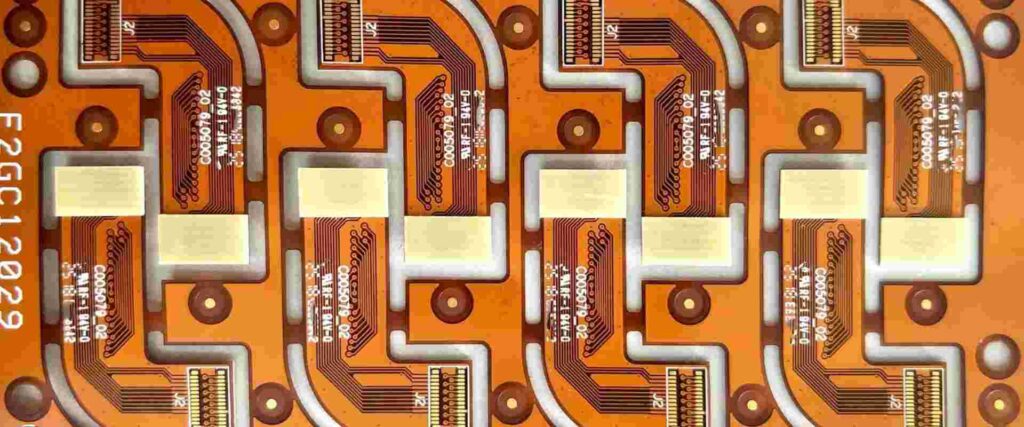The human body has many different types of joints that connect bones together and allow movement. Joints can be classified as either rigid or flexible based on the amount of movement they allow. Understanding the differences between rigid and flexible joints is important for learning how the skeletal system enables the body’s wide range of motions.
An Overview of Joint Types

There are three main types of joints in the body:
Fibrous Joints
Fibrous joints are connected by dense, fibrous connective tissue. These joints allow little to no movement. Examples include joints between skull bones and teeth roots with their sockets.
Cartilaginous Joints
Cartilaginous joints are connected by cartilage. They allow for some movement and flexibility. Examples include joints between vertebrae in the spine.
Synovial Joints
Synovial joints contain a fluid-filled space and connective tissue. They allow for free movement between bones. Examples include joints like the shoulder, hip, knee, and finger joints.
Synovial joints can be further classified as rigid or flexible:
- Rigid synovial joints allow little to no movement. They hold bones firmly in place.
- Flexible synovial joints allow extensive, free movement in multiple planes and directions.
Rigid Joints
Rigid joints are designed to provide stability and hold bones in fixed positions. They allow for minimal motion, often only in one direction or one plane. The rigid connections protect internal organs, maintain body structure, and enable precise movements like chewing.
Examples of Rigid Joints
- Sutures of the skull – jagged lines where skull bones interlock to protect the brain.
- Teeth in their sockets – hold teeth firmly for biting and chewing.
- Joint between leg and pelvis bones – stabilize the pelvis when standing and transfer body weight.
Some specific rigid joints in the body include:
Temporomandibular Joint
This hinge joint connects the jawbone to the temporal bone of the skull. It allows for the upper and lower jaw to open and close for biting and chewing.
Manubriosternal Joint
This joint secures the manubrium of the sternum to the clavicles. It helps stabilize the chest wall.
Sacroiliac Joint
This joint provides stability between the sacrum and ilium bones and transmits forces from the upper body to the pelvis and legs.
Structural Features of Rigid Joints
Rigid joints share some common structural features that limit mobility:
- Tight fibrous connective tissue holds the bones together firmly.
- Cartilage between the bones prevents friction and absorbs shock.
- A narrow synovial cavity provides lubrication but restricts motion.
- Thick, short ligaments bind to the bones.
- Minimal or small joint capsule size limits range of motion.
- Little to no joint cavity space between the bones.
- Bony processes and interlocking shapes prevent sliding movements.
Functions of Rigid Joints
Rigid joints serve important functions in the body:
- Provide fixed connections between bones.
- Enable precise, specialized movements like chewing.
- Maintain and stabilize the structure of the skull and torso.
- Anchor and transmit forces efficiently between bones.
- Protect internal organs and spaces like the abdominal cavity.
- Allow limited mobility while still providing strength and rigidity.
- Enable proper function and performance of the musculoskeletal system.
Flexible Joints
Flexible joints allow much freer, mobile range of motion between bones. They enable complex, multiplanar movements that give the body agility and flexibility.
Examples of Flexible Joints
- Ball and socket joints like the shoulder and hip
- Condyloid joints like the knuckles
- Saddle joints like the thumb joints
- Plane or gliding joints like joints between carpal bones in the wrist
Some specific flexible joints in the body include:
Shoulder Joint
This ball and socket joint allows the arm to rotate in a circular motion and move forward, backward and across the body.
Knee Joint
This hinge joint can bend, extend, medially rotate, and laterally rotate the lower leg.
Vertebral Joints
The small joints between vertebrae in the spine allow for flexion, extension, lateral flexion, and rotation of the back.
Structural Features of Flexible Joints
Flexible joints share structural adaptations that enable free mobility:
- Loose connective tissue and capsule allow ample movement.
- Smooth cartilage surfaces at the ends of bones glide easily.
- A large synovial cavity filled with lubricating fluid facilitates sliding motions.
- The joint space between bones is wider.
- Bones have rounded, bulbous ends that can pivot and rotate.
- Long, loose ligaments support a large range of motion.
Functions of Flexible Joints
Flexible joints provide key functions in the body:
- Allow multi-directional, free range of mobility.
- Enable complex whole body movements for posture, gait, and activity.
- Provide shock absorption against impact forces.
- Allow dynamic adjustments to maintain balance and stability.
- Enable precise hand and finger dexterity.
- Allow smooth twisting and turning motions of the body.
- Provide great agility and coordination during athletic activities.
- Allow us to move in space and interact with our environment.
Key Differences Between Rigid and Flexible Joints

| Rigid Joints | Flexible Joints |
|---|---|
| Allows minimal mobility | Allows extensive mobility |
| Provides fixed bone positions | Enables free range of motion |
| Has tight connective tissue | Has loose connective tissue |
| Thick, short ligaments | Long, loose ligaments |
| Small joint cavity | Large joint cavity filled with fluid |
| Minimal cartilage between bones | Smooth cartilage surfaces |
| Bones interlock and overlap | Bones able to pivot and rotate |
| Provides stability | Provides mobility |
In Summary:
- Rigid joints hold bones in fixed alignments to maintain structure, protect organs, and enable precise movements.
- Flexible joints allow extensive mobility through a range of unrestricted motions for body-wide agility and coordination.
- Rigid joints emphasize stability; flexible joints emphasize free mobility.
Examples of Rigid and Flexible Joints in the Body
The Skull
The skull bones are connected by immovable fibrous joints and sutures. This provides a rigid, protective structure for the brain and sensory organs.
The Spine
The vertebrae of the spine have cartilaginous joints and discs that provide flexibility for bending and twisting motions while still stabilizing the back.
The Shoulder
The shoulder joint is a ball and socket joint that allows the arm to rotate in all directions – up, down, forward, backward, across the body.
The Wrist
The carpal bones of the wrist are joined by small gliding joints that enable flexible hand motions and dexterity.
The Hip
The hip joint enables free mobility of the thigh through its ball and socket structure allowing rotation and range of motion.
The Knee
The knee is a hinge joint that primarily flexes and extends the leg. It provides stability when standing but also some rotation.
The Ankle
The ankle joint allows up and down motions of the foot. It provides stability and weight-bearing support at the base of the leg.
The Importance of Both Rigid and Flexible Joints
Both rigid and flexible joints are essential to normal body function. Rigid joints provide the fixed anchor points needed for stability, posture, and weight transfer. Flexible joints enable free mobility that allows us to move through space and adapt our bodies to different situations.
The body contains a balanced combination of rigid and flexible joints. Too much rigidity would make us stiff and inflexible. Too much flexibility would make us unstable with weak, unsupported structures. The complement of rigid and flexible joints gives the body both stability and mobility for optimal function.
Disorders of Joints
Joint disorders can affect the normal mobility and stability of joints in the body. Examples include:
- Arthritis – causes joint inflammation, pain, and stiffness from cartilage breakdown.
- Sprains and strains – ligament or muscle tears due to injury or overuse.
- Dislocations – when bones become displaced from their normal alignment.
- Fractures – cracks or breaks in bone structure.
- Osteoporosis – age-related bone weakening that increases fracture risk.
Proper treatment of joint disorders aims to restore normal joint function and a balance of flexibility and stability.
Conclusion
Rigid and flexible joints perform complementary functions in the body. Rigid joints provide fixed anchor points for structure and precise movements. Flexible joints allow extensive mobility for coordination and range of motion. The body needs both types of joints to maintain posture, transfer forces, enable agility, and conduct daily activities. Problems with either joint type can impair normal function. Understanding the differences between rigid and flexible joints provides insight into how the skeletal system enables both stability and mobility.
Frequently Asked Questions
What are the main differences between rigid and flexible joints?
The main differences are:
- Rigid joints allow little mobility while flexible joints allow extensive, free mobility.
- Rigid joints provide fixed bone alignments for stability while flexible joints enable range of motion for agility.
- Structurally, rigid joints have tight connective tissue and small joint cavities compared to flexible joints with loose connective tissue and large, fluid-filled joint spaces.
What are some examples of rigid joints?
Examples of rigid joints are sutures in the skull, the temporomandibular joint of the jaw, the manubriosternal joint between the sternum and clavicles, and the sacroiliac joint between the sacrum and ilium bones. These provide stability and structure.
Why are rigid joints important?
Rigid joints are important for protecting internal organs, maintaining body structure, allowing precise movements like chewing, anchoring muscle attachments, and stabilizing the skeleton for standing and weight transfer.
What types of joints provide the most flexibility?
Ball and socket joints like the shoulder and hip along with condyloid, saddle, and plane/gliding joints provide the greatest flexibility and mobility. Their structural adaptations enable extensive range of motion.
How does joint flexibility help human movement?
Joint flexibility allows multi-directional, free range of motion. It enables complex whole body movements for posture, gait, dexterity, coordination, and athletic activities. Flexible joints give the body agility.






Leave a Reply